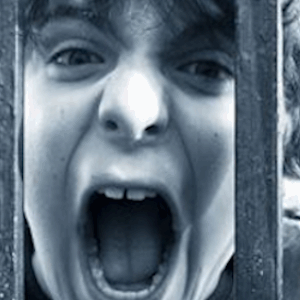How and Why Re-Homing Began

Photo by Gabriella Fabbri
Re-homing or re-homed are new words for many individuals. A simplified definition of re-homing is utilizing the internet to pass off adopted children to someone else. Many times this is done callously. Sometimes this is done across state lines. Too many times this is done with no official research about the receiving individuals. This is not a happy story, but it is one that needs broader attention.
Some research indicates that this practice could have become distorted from a worthwhile idea. Adoption is a challenging undertaking, requiring thought, caring and realism. Sometimes, after the formal adoption process is complete, problems arise like the child having been abused, mentally or physically. Unfortunately, the abuse may sometimes even be of a sexual nature. One of the most common problems encountered by adopted children is attachment disorder. The National Institutes of Health defines reactive attachment disorder as a problem with social interaction that occurs when a child’s basic physical and emotional needs are neglected, particularly when the child is an infant . Attachment disorder manifests itself in many differing fashions. Here are a few of the possible behaviors displayed by children with attachment disorder: clinginess, destructiveness, lack of remorse, failure to link cause with effect, inability to participate in a healthy relationship, insomnia, overly-charming, poor eye contact and overly affectionate with strangers. According to the International Child and Youth Care Network, “The statistics indicate that there are 800,000 children with severe attachment disorder coming to the attention of the (U.S.) child welfare system each year.”
Several years ago, some adoptive parents formed an informal forum/group page on the internet. They were trying to solicit assistance, support and ideas from other parents in similar situations. The creation of a peer support group sounded like a good idea. There are questions on how much, if any, professional support or guidance was given to this internet forum. Sometime after the beginning of the group, it began: re-homing. Some parents started to offer their adopted children to other individuals, not necessarily for monetary recompense but to remove the children they could no longer handle.
Many may think that re-homing happens only with children who were adopted internationally. The majority of cases do deal with overseas adoptions and the number of children being re-homed is only an estimate. However, in this investigation, Reuters indicates the number of American children (i.e. at one point part of the U.S. foster care or adoption system) re-homed at between 8% and 30%.
Why Re-Homing is Dangerous (and Difficult to Trace)
Some would think that the authorities would handle the situation. Unfortunately, the underground, informal nature of this practice makes this difficult. Some participants use simple power of attorney documentation to faux-legalize the transfer. Some use a simple note; some do not even care about a paper trail or do they investigate the quality of the care the child will receive. There are several documented cases of re-homed children suffering terrible abuse. One of the recipient parents has the nickname of “lovethemcute”.
In one Reuters article Megan Twohey wrote, “There is one potential safeguard: an agreement among the 50 U.S. states, the District of Columbia and the U.S. Virgin Islands called the Interstate Compact on the Placement of Children, or ICPC. The agreement requires that if a child is to be transferred outside of the family to a new home in a different state, parents notify authorities in both states. That way, prospective parents can be vetted. The compact has been adopted by every state and is codified in various statutes that give it the force of law. Even so, these laws are seldom enforced, in part because the compact remains largely unknown to law enforcement authorities.”
Some have indicated that re-homing may be easier than selling a used car. Some go so far as to equate it to giving your pet away.
How Can Re-homing Be Stopped?
What should be done? In a recent Adoption Voices Magazine forum on this topic, Kim Brown, former CEO of Holt International Children’s Services said, “There really is only one thing that should be kept in mind as everyone looks into this concern. What is best for the child? Many times that simple question is lost in the shuffle of legal and moral processes. If we all keep that simple question in mind, the right thing will be done for the child.”
Mr . Brown’s words are hopeful, idealistic and a great starting point. Would there be a discussion about this topic if every adoptive parent in similar desperate situations reached out for qualified help? We will never know.
